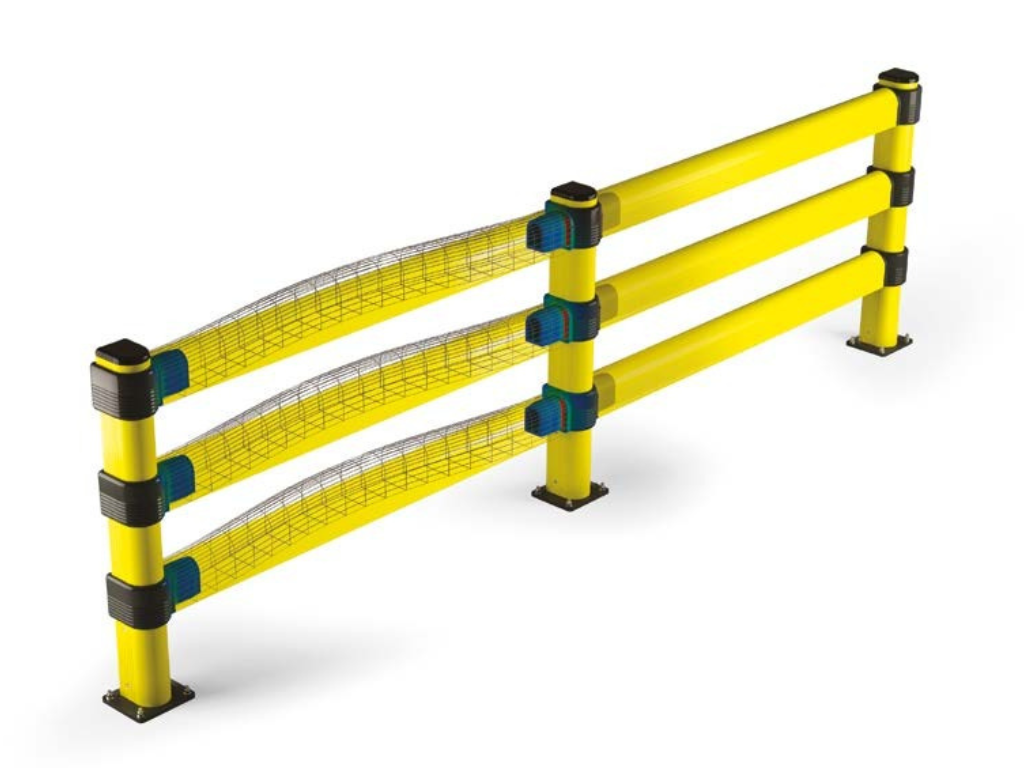What Should I Be Thinking About When Considering Barriers for My External Yard?
 By
Damian White
·
2 minute read
By
Damian White
·
2 minute read
External yards are some of the most high-risk areas in any industrial or logistics environment. With heavy vehicles, changing weather conditions, tight turning zones, and pedestrian traffic all in the mix, the right barrier setup isn’t just important, it’s essential.
At Clarity, we help you build smarter, safer external spaces using proven barrier solutions tailored to their risks.
Here's what you should be thinking about before installing (or upgrading) your barriers in your external yard.
1. Understand Your Risk Areas
Not every part of your yard will need the same level of protection. Start by identifying:
-
Vehicle movement zones (especially reversing or turning areas)
-
Pedestrian walkways and crossings
-
Loading bays and dock areas
-
MHE or FLT charging stations
-
Critical infrastructure like racking, fuel tanks or plant rooms
The higher the vehicle traffic and the greater the risk of collision, the more robust the barrier system you’ll need.
2. Choose Barriers Designed for Outdoor Use
External yards face challenges that indoor barriers don’t, such as UV exposure, water ingress, temperature fluctuations, and uneven ground. That means not every barrier is suitable outside.
Our MPM polymer barriers are built for the outdoors:
-
UV-stabilised to prevent colour fading
-
Weather-resistant and non-corrosive
-
Impact-absorbing to protect vehicles and infrastructure
-
Modular and maintainable for long-term flexibility
3. Select the Right Height and Strength
Barrier height and strength depend on the area’s purpose:
-
150mm Kerbs: Protect walls, bay edges, chargers, and low-level infrastructure from FLT forks.
-
400–500mm Mid-Height: Ideal for asset protection and racking ends. These help stop pallets, trolleys, and reversing MHE.
-
1150mm Pedestrian Barriers: Clearly separate foot traffic from vehicle zones with high-visibility, durable safety segregation.
-
2000–3000mm High-Level Barriers: Used where HGVs and forklifts pose a toppling risk. Common near fire escapes or fuel points.
Need help planning your configuration? Use our barrier calculator or get in touch for a site-specific layout.
4. Think About Your Surface
Yard surfaces vary: tarmac, block paving, concrete, or even gravel. Therefore, fixings need to be matched to the ground type.
At Clarity, we:
-
Provide fixings for all major ground surfaces
-
Offer installation advice or full fitting services
-
Make sure barrier placement allows for drainage, expansion joints and site-specific movement
5. Visibility Matters
Your barriers aren’t just protection. They’re visual cues. In dark yards or winter conditions, visibility is critical.
Our standard yellow polymer barriers are:
-
Bright and high-contrast, with optional reflective inserts
-
Available with bollards and signage integration
-
Easy to clean to stay bright and visible over time
6. Future-Proof Your Layout
Yard layouts often change with operational needs. The barrier system you install now should adapt later.
That’s why our barriers are:
-
Fully modular - extend, shorten, or reconfigure without re-purchasing full systems
-
Easy to upgrade with gates, corners, or strengthening components
-
Covered by a 2-year warranty, even with self-install
Don’t Overlook the Yard
Many businesses prioritise internal safety and leave their yard "until later." But your yard is often where the most serious incidents can happen.
So make sure to plan ahead to prevent any serious accidents happening and build external safety into your overall protection strategy.
Want support? Our team can assess your site and help you build a plan that works for your space, your traffic, and your people.
Get a quote or start your external yard plan today.




.jpg)